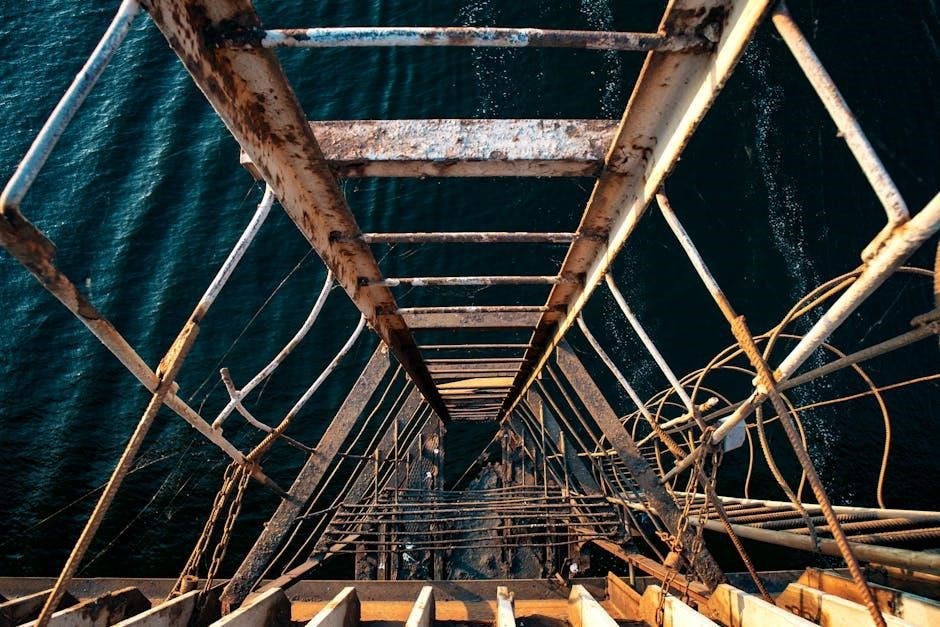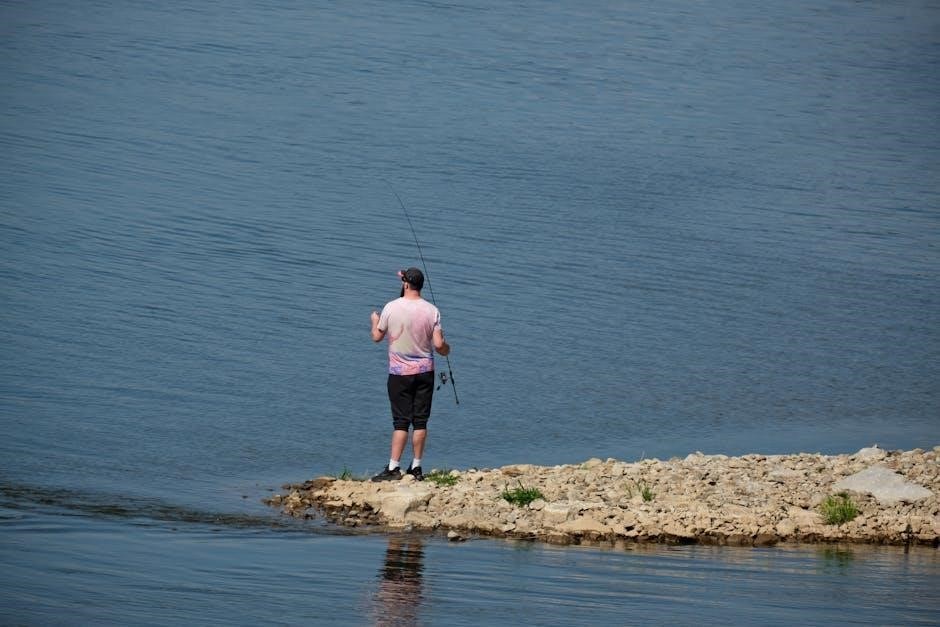Water Weld is an easy-to-use epoxy putty for sealing and repairing wet surfaces․ It sets in 25 minutes and cures in an hour, making it ideal for household, garage, and marine repairs․ Perfect for leaks, cracks, and holes in plumbing, tanks, and more․ Apply water to the repair area, knead the putty, and press firmly for a strong, durable bond․

Water Weld is a versatile and highly effective epoxy putty designed for sealing and repairing wet surfaces․ It is ideal for a wide range of applications, including household repairs, garage projects, and marine maintenance․ Unlike traditional adhesives, Water Weld can be applied directly to damp or submerged surfaces, making it perfect for fixing leaks, cracks, and holes in plumbing, fuel tanks, and other underwater or wet environments․ Once applied, it sets in approximately 25 minutes and fully cures in about an hour, providing a strong and durable bond․ Water Weld is resistant to water pressure, heat, and chemicals, making it a reliable solution for both emergency repairs and long-term fixes․ Its unique formula allows it to be sanded and painted after curing, ensuring a seamless finish․ Whether you’re a DIY enthusiast or a professional, Water Weld is an essential tool for any project requiring a waterproof and sturdy repair․
- Fast-setting formula for quick repairs․
- Works underwater and on damp surfaces․
- High-strength bond for lasting durability․
- Compatible with painting and sanding for a smooth finish․
Materials Needed for Water Weld Application
To ensure a successful repair with Water Weld, gather the following materials:
- Water Weld Stick: Available at hardware stores or online retailers like Amazon․
- Protective Gloves: Essential to protect your skin from the epoxy putty․
- Knife or Scissors: For cutting the desired amount of putty from the stick․
- Clean Cloths or Towels: For cleaning the surface before application․
- Sandpaper: To roughen the surface for better adhesion․
- Water and Soap: For cleaning the repair area thoroughly․
- Metal Primer (Optional): If you plan to paint the repaired area for a seamless finish․

Having all materials ready before starting ensures a smooth and efficient application process․ Always close the container tightly after use to maintain the product’s shelf life․

Safety Precautions Before Starting
Before applying Water Weld, follow these essential safety precautions to ensure a safe and effective repair process:
- Wear Protective Gloves: Prevent skin irritation by wearing sturdy gloves when handling the epoxy putty;
- Work in a Well-Ventilated Area: Avoid inhaling fumes from the putty by ensuring good airflow in your workspace․
- Avoid Eye Contact: If the putty comes into contact with your eyes, rinse immediately with water and seek medical advice if irritation persists․
- Keep Away from Children and Pets: Ensure the repair area is out of reach of children and pets to avoid accidents․
- Prevent Skin Contact: Wash hands thoroughly with soap and water after handling the putty to remove any residue․
- Ensure Proper Surface Preparation: Clean and dry the surface thoroughly before application to avoid contamination․
- Use in a Stable Environment: Avoid applying Water Weld near open flames or sparks, as it may release flammable vapors during curing․
By following these safety guidelines, you can safely and effectively use Water Weld for your repairs․
Surface Preparation for Optimal Bonding
A clean and properly prepared surface is crucial for achieving a strong and durable bond with Water Weld․ Follow these steps to ensure optimal adhesion:
- Clean the Surface: Remove dirt, oil, grease, and rust using a solvent like acetone․ A clean surface ensures better contact between the putty and the material․
- Dry the Area: After cleaning, allow the surface to dry completely․ Moisture can interfere with the bonding process․
- Roughen the Surface: Use sandpaper (e․g․, 80-grit) to roughen the area around the crack or hole․ This creates a better mechanical bond with the putty․
- Apply Water: Lightly wet the repair area with water․ This helps the putty adhere more effectively, especially underwater․
- Remove Contaminants: Ensure no remnants of old adhesives, paint, or other substances remain on the surface, as they can weaken the bond․
- Inspect for Damage: Check for any additional cracks or damage that may need to be addressed before applying the putty․
Proper surface preparation ensures that Water Weld adheres effectively, leading to a long-lasting repair․

Step-by-Step Application Process
Applying Water Weld effectively requires careful attention to detail and quick action due to its short working time․ Here’s a step-by-step guide:
- Cut the Putty: Use a knife or scissors to cut off the desired amount of Water Weld from the stick․ Cut slightly more than needed to ensure full coverage․
- Knead the Putty: Knead the cut portion with your fingers until it becomes a uniform color and pliable․ This ensures proper mixing of the epoxy components․
- Apply to Surface: Press the kneaded putty firmly onto the prepared surface, ensuring it fills the crack or hole completely․ Smooth the edges to blend with the surrounding area․
- Shape and Smoothen: Use your fingers or a tool to shape the putty as needed․ Remove any excess material to achieve a clean finish․
- Allow to Set: Let the putty set for 25 minutes․ Avoid disturbing the area during this time to ensure proper adhesion․
- Cure Fully: Allow the putty to cure for 4-6 hours, depending on temperature and humidity, before exposing it to water or stress․
Following these steps ensures a strong and durable repair with Water Weld․
Curing and Drying Times
Understanding the curing and drying times of Water Weld is crucial for a successful repair․ The putty typically sets in about 25 minutes, forming a hard surface․ However, full curing takes longer, requiring 4 to 6 hours depending on environmental conditions like temperature and humidity․ During this time, avoid exposing the repair to water or stress to ensure proper bonding․
After the initial cure, Water Weld reaches its maximum strength and durability within 24 hours․ This allows it to withstand water pressure up to 500 PSI and temperatures up to 250°F․ For optimal results, let the putty cure undisturbed in a clean, dry environment․ Humidity and warmer temperatures can slightly accelerate the curing process, while cooler conditions may slow it down․ Always wait the full recommended time before testing the repair or returning the item to service․

Proper curing ensures the repair is strong and long-lasting, making it essential to follow the guidelines carefully․
Common FAQs About Water Weld
How long does Water Weld take to harden? It typically sets in 25 minutes and fully cures in 4 to 6 hours, depending on conditions․ Can I sand or paint it? Yes, once cured, it can be sanded with 80-200 grit sandpaper and painted after applying a metal primer․ Why might it fail? Poor surface preparation, such as not cleaning or roughening the area, can prevent proper adhesion․ Mixing errors, like not kneading thoroughly, also reduce effectiveness․ How strong is it? Water Weld cures to a strength of 4,370 PSI and withstands 500 PSI water pressure and 250°F temperatures․ Is it safe for underwater use? Yes, it can be applied underwater, making it ideal for marine repairs․ Can unused putty be saved? Yes, simply reseal the tube tightly after use․ Following these guidelines ensures successful and durable repairs with Water Weld․

Tips for a Successful Repair
For a successful repair with Water Weld, ensure the surface is clean, dry, and free from contaminants like oil or rust․ Use sandpaper to roughen the area for better adhesion․ Apply water to the repair surface before pressing the putty firmly into the crack or hole․ Knead the putty thoroughly until it reaches a uniform color to ensure proper mixing․

Avoid overworking the putty once applied, as this can create air bubbles․ Smooth the edges with a damp finger or tool for a seamless finish․ After application, keep the area dry for at least 24 hours to allow proper curing․ Always wear gloves to protect your skin from the epoxy․
Work quickly, as Water Weld has a short working time of 3-4 minutes․ If unused putty remains, reseal the tube tightly to maintain freshness․ By following these tips, you can achieve a strong, durable, and long-lasting repair with Water Weld․
Compatibility with Different Materials
Water Weld is highly versatile and compatible with a wide range of materials, making it suitable for various repair projects․ It adheres well to metal, plastic, concrete, wood, and fiberglass, among other surfaces․ This makes it ideal for repairs in plumbing, marine environments, and household fixtures․
- Metal: Bonds strongly to steel, aluminum, and other metal surfaces, providing a robust seal;
- Plastic: Works effectively on PVC, ABS, and other plastic materials commonly found in pipes and tanks․
- Concrete: Seals cracks and holes in concrete surfaces, both in and out of water․
- Wood: Can be used to repair wooden structures, especially in damp or wet conditions․
- Fiberglass: Bonds well to fiberglass, making it ideal for boat repairs․
Water Weld is also resistant to water pressure up to 500 PSI and temperatures up to 250°F, ensuring durability in harsh environments․ Always ensure the surface is clean and free from contaminants for optimal bonding․ This versatility makes Water Weld a reliable choice for diverse repair needs․

Strength and Durability Specifications
Water Weld is renowned for its exceptional strength and durability, making it a reliable solution for demanding repairs․ It achieves a tensile strength of 4370 PSI, ensuring a robust bond that withstands heavy use and harsh conditions․
- Water Pressure Resistance: Withstands up to 500 PSI, ideal for underwater repairs and high-pressure applications․
- Temperature Resistance: Performs effectively in temperatures ranging from -50°F to 250°F, ensuring reliability in extreme environments․
- Chemical Resistance: Resists common chemicals, including diesel fuel, gasoline, and cleaning agents․
- Shock and Vibration Resistance: Maintains its integrity under mechanical stress, making it suitable for dynamic environments․
Once cured, Water Weld becomes a permanent, non-shrinking bond that can be drilled, sanded, or painted․ Its durability ensures long-lasting repairs in both wet and dry conditions, making it a versatile solution for a wide range of materials and applications․
Maintenance and Storage Tips
To ensure the longevity and effectiveness of Water Weld, proper maintenance and storage are essential․ Store the product in a cool, dry place, away from direct sunlight and moisture․ Always keep the container tightly sealed after use to prevent contamination and drying out․
- Storage Conditions: Maintain a temperature range of 50°F to 90°F (10°C to 32°C) for optimal shelf life․
- Unused Product: Return unused portions to the original packaging immediately after use to prevent exposure to air․
- Cleanliness: Clean tools and surfaces with soap and water before and after use to ensure proper adhesion and prevent contamination․
- Expiration Date: Check the expiration date on the packaging and use the product within the recommended timeframe for best results․
- Disposal: Dispose of leftover material and packaging responsibly, following local regulations and guidelines․
By following these maintenance and storage tips, you can ensure Water Weld remains effective and ready for use when needed․ Proper care will extend its shelf life and performance in various repair applications․
Water Weld is a versatile and reliable solution for a wide range of repairs, offering exceptional strength and durability․ Its ability to bond with wet surfaces makes it ideal for plumbing, marine, and household fixes․ By following the instructions and safety precautions outlined in this guide, you can achieve professional-quality results with minimal effort․
Remember to always prepare surfaces thoroughly, work quickly during application, and allow the recommended curing time for optimal performance․ Proper storage and maintenance will ensure the product remains effective for future use․ Whether you’re tackling a leaky pipe or a damaged tank, Water Weld is a trusted tool for any repair project․
With its high strength rating of 4370 PSI and resistance to water pressure and extreme temperatures, Water Weld is a dependable choice for both emergencies and routine maintenance․ By adhering to the guidelines and tips provided, you can confidently complete repairs and extend the life of your materials․